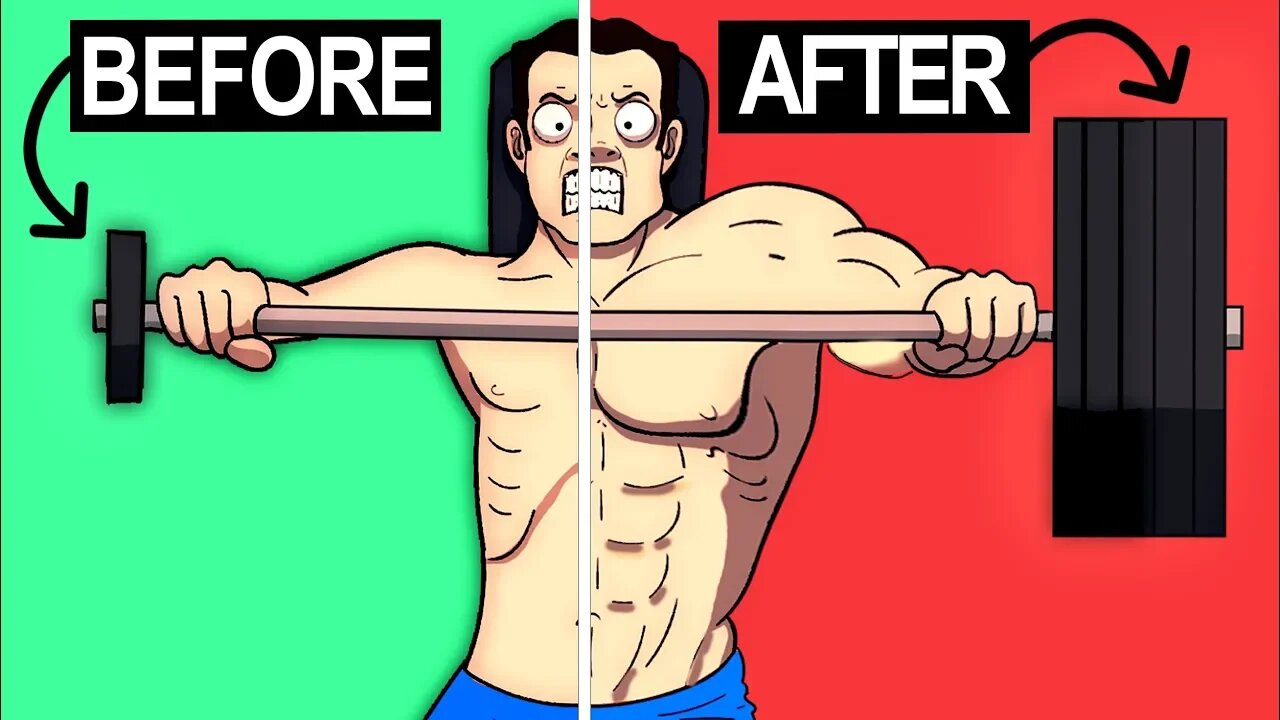Premium Only Content

5 Ways To INCREASE Your Bench Press
Discover 5 unique ways to increase the amount you bench press. If you find that you're weak with dumbbell chest exercises or barbell bench press then this video will help you learn what to do to lift more weight. You'll not only get a stronger bench, but you'll also build more muscle, and explode your max in all your upper body pushing movements.
🔥 FREE 6 Week Shred: https://GravityTransformation.com
📲 Fat Loss Calculator: https://bit.ly/2UxfPTQ
Timestamps:
1. Compensatory Acceleration Training (CAT) 0:45
2. Plyometrics 3:03
3. Start Dead Bench Pressing 5:59
4: Technique 8:08
5. Include Auxillary Workouts 9:24
When I first started Bench Pressing I was one of the weakest guys at the gym. I remember actually being embarrassed to bench in front of other people at my high school. And I would go to a separate gym after school to work on it privately. Since then I’ve really improved my bench and I did it naturally, just by using a couple simple methods that I’m about to share with you today. I know how frustrating it can be to feel weak with this exercise, so I want to go over 5 specific things that you can start doing right away to improve your bench press. And you don’t just have to take my word for it because these 5 strategies that I’m about to show you have been tried and tested by the best benchers in the business. As long as you use them consistently you’ll be amazed at how quickly your benching power will skyrocket. So lets get started with our first method - something known as compensatory acceleration training or CAT. This involves using explosive force to power out of the bottom portion of the bench. To start you want to select a heavy enough weight that will barely allow you to squeeze out 8 reps. When bringing the bar down towards your chest you want to imagine that the bar explodes as it touches your chest, powering back up to the starting position. By exploding as hard as possible on the positive or lifting portion of the rep, you’ll be able to use the improved leverage and momentum as the weight drives up to push through the traditional sticking point, which is just before lockout. One study found that sticking points on the bench press usually happen once you’re 90 percent through the lift. Another study found that sticking points happen because of a lack of transitional phases and not producing enough force to overcome the weight. The researchers in this study concluded that focusing on explosive power off the chest and carrying that power all the way through to lockout is vital to improving your bench. They also found that having better control on the eccentric part of the lift will help with getting the weight back up as well. So, the goal should be to lower the weight to your chest in a slow and controlled way and then explode up as fast as you can. If you aim to get enough speed after coming off your chest, you’ll be able to overcome the sticking points. Another study focused on muscle activity during the upward movement portion of the bench press. Researchers broke the upward phase of the bench into three parts – Phase 1 was the pre-sticking point, Phase 2 which was the sticking point, and Phase 3 was when the barbell sped up again after moving past the sticking point. On average The sticking point was reached somewhere between 1/5th and 1/3rd of a second...
Research:
One study found that sticking points on the bench press usually happen once you are 90 percent through the lift
[1] The Sticking Point in the Bench Press, the Squat, and the Deadlift: Similarities and Differences, and Their Significance for Research and Practice
The researchers concluded that focusing on explosive power off the chest and carrying that power all the way through to lockout was vital to improving your bench. They also found that having better control on the eccentric part of the lift will help to get the weight back up
[2] Effect of Different Pushing Speeds on Bench Press
The researchers found that the deltoids and pectorals increased activation after the sticking point, while the biceps decreased activity. The sticking point was reached between .2 and .35 of a second after the bar came off the chest
[3] The Sticking Period in a Maximum Bench Press (Journal Sports Sciences 2010)
All athletes experienced a considerably greater one rep max after performing the plyometric exercises than when building up with sub maximal lifts. The average increase was 4% higher when doing plyometrics
[4] Acute Explosive-Force Movements Enhance Bench Press Performance in Athletic Men
The study, which was focused on beginner weight trainers, recommended that beginners should perform concentric training in addition to full range movements to get stronger faster.
[5] Effect of Muscle Actions Against Strength Gains
-
 2:12:50
2:12:50
Adam Carolla
8 hours agoDouble Murder Convict to be executed by Firing Squad + Comedian Elon Gold + Comedian Carol Leifer
6303 -
 46:08
46:08
Kimberly Guilfoyle
3 hours agoBad Day to be a Bad Guy: FBI Taking Down World’s Worst Criminals, Live with John Nantz | Ep.203
27.4K8 -
 DVR
DVR
Redacted News
2 hours agoWhat's REALLY going on in Syria? | Redacted with Natali Morris
40.4K32 -
 54:18
54:18
Candace Show Podcast
2 hours agoHarvey Speaks: Jessica Mann & The Five Year Affair | Ep 3
27.6K9 -
 56:53
56:53
Grant Stinchfield
1 hour ago $0.59 earnedFreeze Spending & Kick the Can Down the Road... Why Republicans Should do Just That!
6.42K4 -
 56:48
56:48
VSiNLive
2 hours agoFollow the Money with Mitch Moss & Pauly Howard | Hour 1
6.81K -
 LIVE
LIVE
Barry Cunningham
3 hours agoTRUMP DAILY BRIEFING: INTERNET UNDER ATTACK! X & RUMBLE DOWN! EXECUTIVE ORDER SIGNING!
1,278 watching -
 DVR
DVR
Scammer Payback
6 hours agoCalling Scammers Live
30K3 -
 1:36:15
1:36:15
In The Litter Box w/ Jewels & Catturd
1 day agoABOLISH NGOs | In the Litter Box w/ Jewels & Catturd – Ep. 758 – 3/10/2025
54.7K36 -
 2:04:36
2:04:36
Film Threat
19 hours agoVERSUS: DAREDEVIL: BORN AGAIN + MICKEY 17 + THE STATE OF SCI-FI | Film Threat Versus
17.5K1